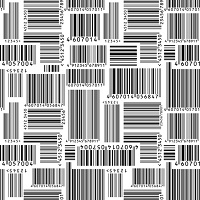 Choosing the right scanner can be the difference in how effectively your system works. Choosing the right type of barcode can be equally important. Following is an explanation of the two most common barcode families as well as an explanation of some of the common barcodes associated with them.
Choosing the right scanner can be the difference in how effectively your system works. Choosing the right type of barcode can be equally important. Following is an explanation of the two most common barcode families as well as an explanation of some of the common barcodes associated with them.
Barcodes allow us to precisely record and reference data. They give us the ability to encapsulate everything from a very small amount of data (such as an item SKU) to very large collections of information (such as a shipping manifest or binary strings). It is important to understand barcode types to match them properly to your application. Some barcodes are best suited to retail while others for warehousing and manufacturing.
The following information will help you understand 1D and 2D barcode types and identify the versatility of each as well as the advantages and disadvantages of both types.
One-Dimensional (1D) VS Two-Dimensional barcodes
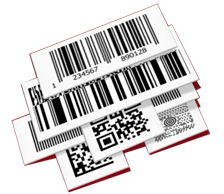 Both 1D and 2D barcodes encode data that is decoded using a laser or other imaging device, but that is where the similarities stop. The methods used by each barcode type for storing that data varies greatly between these two symbology types.
Both 1D and 2D barcodes encode data that is decoded using a laser or other imaging device, but that is where the similarities stop. The methods used by each barcode type for storing that data varies greatly between these two symbology types.
One-dimensional Barcodes: Simple & easy to implement
One-dimensional barcode data is stored in linear, parallel lines that vary in width and spacing. 1D barcodes can hold up to 85 characters (character limit is specific to a given symbology). Their linear format makes them better suited for smaller amounts of information since larger values would make the barcode too wide to display properly on a screen or printed page. Changing the density of 1D barcodes can help to shrink a barcode to display more data on a page or screen but at the cost of reduced resolution and the ability to scan properly.
Two-dimensional Barcodes: More data in less space
Two-dimensional (2D) barcodes, such as Data Matrix, PDF417, and QR Code, typically have patterns, squares, dots, hexagons and other geometric patterns. They are able to maintain a fairly small size while holding much more data than linear 1D barcodes. 2D barcodes can hold hundreds and sometimes thousands of characters. Decoding these requires a reader capable of decoding 2D barcodes.
Barcode Description Filter
UPC (Universal Product Code) are the most ubiquitous barcode in existence. Most retail products sold in North America feature this barcode while retail products sold outside of North America feature an EAN barcode. The UPC contains a unique 12 digit code that a retailer requires to record and lookup the information for the item in their inventory or point of sales system. This information helps the retailer keep accurate inventory data, review sales, and reorder.
The UPC family also includes UPC-A encoding 12 numerical digits and UPC-E which is smaller and only encodes 6 numeric digits.
| Best Use: | Retail |
| Date Type: | Numeric |
| Data Limit: | 6-12 numeric digits |
EXAMPLE:
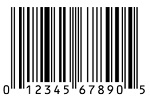
Code 39 was developed in 1974 and is one of the most common 2D barcodes widely used for inventory, warehousing and industrial applications. These barcodes are similar to Code 128 but they are less dense/compact making them less attractive in applications where horizontal space is limited. Code 39 barcodes are variable length and capable of storing alpha numeric data up to 43 characters in length. Each character is composed of nine elements: five bars and four spaces.
| Best Use: | Inventory, Warehousing, Industrial |
| Date Type: | Alpha/Numeric |
| Data Limit: | 43 Characters |
EXAMPLE:
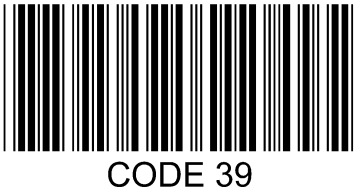
Code 128 is a one-dimensional (1D), high-density barcode that is able to encode letters, numbers, special characters and control codes. Its primary use is in supply chain (inventory, shipping, etc). It can encode all 128 characters of ASCII. Code 128 barcodes require a mandatory "quiet zone" to the left and right of the barcode data. Code 128 barcodes carry other specifications like start, stop and check symbols.
The standard definition of Code 128 does not limit the number of characters that can be encoded, however GS1-128 (the formal application of Code 128 to the supply chain industry) limits it to 48 characters.
Code 128 supports double-density compression of numeric data ("mode C") which makes encoding long strings of digits much more efficient.
| Best Use: | Inventory, Warehousing, Industrial |
| Date Type: | Alpha/Numeric/Special Characters |
| Data Limit: | 48 Characters (GS1-128) |
EXAMPLE:

ISBN barcodes are printed on editions of publications (except reprints). The barcodes will be unique for each type of a book. For example, a single publication printed in paperback, hardcover or e-book will each have a separate and unique ISBN number and barcode. ISBN barcode data consists of a 13 digit numeric code (10 digits prior to January 2007).
| Best Use: | Printed books / E-books |
| Date Type: | Numeric |
| Data Limit: | 13 digits (10 digits prior to January 2007) |
EXAMPLE:
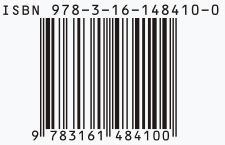
SCC Barcodes are commonly used on shipping cartons and pallets. They consist of a 14-digit code that allows receiving docks to receive multiple units shipped on a single pallet.
| Best Use: | Shipping cartons and pallets |
| Date Type: | Numeric |
| Data Limit: | 14 digits |
EXAMPLE:

GS1 DataBar barcodes used primarily for point of sale and healthcare applications for items such as coupons, produce and other perishable items. They have been previously known as formerly known as Reduced Space Symbology (RSS). They are more compact than typical consumer barcodes. GS1 DataBar barcodes are a family of barcodes.
Some GS1 barcodes in this family look very similar to familiar barcodes with a series of vertical black and white lines while other have stacked formats with a 1x space between both stacked barcodes (see examples below). Some of these stacked formats allow for the embedding of attributes such as expirations or sell by dates, product weights, etc.
| Best Use: | Grocery and healthcare |
| Date Type: | Numeric |
| Data Limit: | 14 digits |
EXAMPLE:

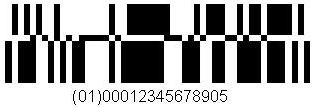
QR Code barcodes are most commonly focused on consumers. They allow for encoding large amounts of data to store information related to consumer usage such as website URLs, phone numbers, business cards and ticketing information. These barcodes can interact directly with a smartphone to enable a user to visit a website or automatically dial a phone number by scanning the QR code with the smartphone's camera - they are not readable using a laser scanner.
QR codes work well in low resolution (such as faxing), are free for public use and can support four different types of data: numeric, alphanumeric, byte/binary, and Kanji.
| Best Use: | Retail, event, marketing |
| Date Type: | numeric (7089 char), alphanumeric (4296 char), byte/binary (2953 char), and Kanji |
| Data Limit: | Relative to Data Type (see above) |
EXAMPLE:
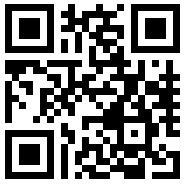
Data Matrix barcodes get their name from the black and white "cells" or modules arranged in either a square or rectangular pattern - also know as the matrix. These types of two-dimensional barcodes are well suited for identifying things like small electronic components and assemblies due to the code’s ability to encode up to fifty characters in a symbol that is readable at 2 or 3 mm2. Data Matrix barcodes are also used frequently in engineering applications where data matrix barcodes are marked with lasers, physical dots (dot-peen) or chemical etching.
Similar to QR barcodes, Data Matrix barcodes have a high fault tolerance making them highly readable at low resolutions and allow for encoding large amounts of data. The maximum data limit is 1556 bytes. Error correction is built into these barcodes to increase readability, so even if one or more cells are damaged, the data can still be read. A Data Matrix barcode can store up to 2,335 alphanumeric characters.
| Best Use: | Electronic components, industrial engineering |
| Date Type: | Alphanumeric |
| Data Limit: | 2,335 characters |
EXAMPLES:
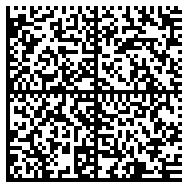
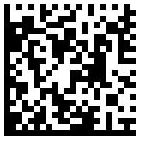
PDF417 barcodes are capable of encoding large amounts of data and are commonly used postage, shipping and personal identification. PDF417 is one format used by the United States Postal Service and is used by the airline industry to encode boarding pass information.
PDF417 barcodes are public domain and free to use without license.
| Best Use: | Airline boarding passes, Postage, Shipping (FedEx) |
| Date Type: | Alphanumeric |
| Data Limit: | 1100 bytes or 1800 ASCII characters |
EXAMPLE:

Unlike some of the previous mentioned 2D barcodes, the Aztec symbology does not make use of quiet zones (surrounding blank space), thus allowing it to take up less space than other matrix-based barcodes. The Aztec symbol is built on a square grid with a bulls-eye pattern at its center for locating the code. The center square assists the ready in easily orienting itself providing faster scan times with fewer problems, making it ideal for use for mobile ticketing.
The primary use for Aztec barcodes is in public rail transport as well as the International Air Transport Association, where it’s used on all boarding passes.
| Best Use: | Transportation |
| Date Type: | Alphanumeric |
| Data Limit: | 3067 alphanumeric, 3832 numeric, 1914 Bytes |
EXAMPLE:
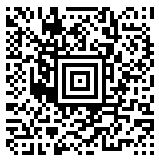
Conclusion
These barcodes represent some of the most common symbologies used. It's important to understand the common uses for each barcode when determining which one fits best for your needs. Consider the details listed above with further research when determining the best barcode to use.



